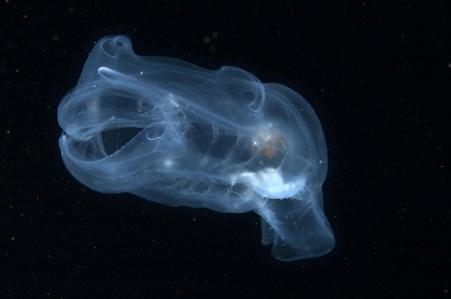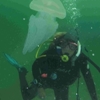General Description
May exist as an individual (solitary form) or in a colony of multiple individuals (aggregate form). Solitary form is barrel-shaped with a wide opening at one end, and a narrower opening at the other. Four muscle bands extend across the upper surface, forming two "X" shapes. Colonial forms are similar except the body has a rounded point at one end. Up to 8 cm long.
Biology
Salps feed by filtering water through their body and catching their food (tiny plankton) on a mucous net.
Habitat
Open water, near surface to depth of 100 m.
Open water
Distribution guide
Worldwide.
Species Group
Jellyfishes and allies › Salps
Depth
Shallow (1-30 m)
Deep ( > 30 m)
Water Column
Max Size
8 cm
Diet
Plankton or Particles
Harmful
Not known to be dangerous to humans.
Commercial Species
No
Global Dispersal
Recorded in Australia
Identify
Conservation Status
- DSE Advisory List : Not listed
- EPBC Act 1999 : Not listed
- IUCN Red List : Not listed




